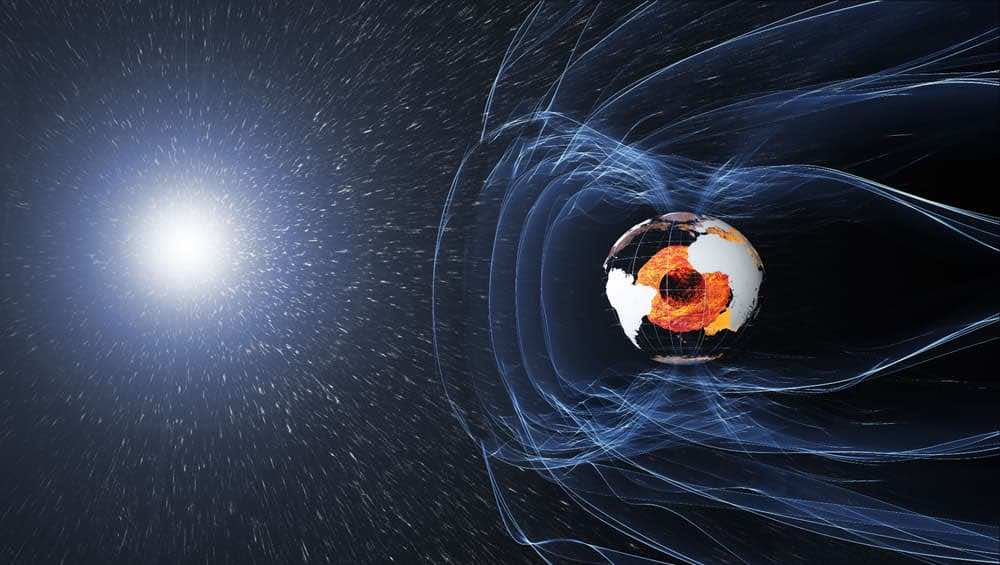The European Space Agency is monitoring the variations in the magnetic field of the Earth using the ESA Swarm satellites. The three satellites were launched just before the start of 2014 to map the detailed emission of the magnetic radiations from the core, mantle, crust, oceans, ionosphere and magnetosphere of the Earth.
It is quite a well-known fact that the magnetic and the electric field surrounding and enveloping the Earth protect us against the onslaught of the cosmic radiations. However, a lesser known fact is that this magnetic field is not constant; rather it is in a perpetual state of change and variation.
The results collected from the Swarm satellites were introduced at the Living Planet Symposium, being held in Prague, Czech Republic from 9-13 May 2016. The maps indicate the regions in which the magnetic field around the Earth is changing as well as the pace at which these changes are occurring. Apart from the Swarm satellites, the data garnered from the CHAMP and Ørsted satellites were also used to make these maps.
This map depicts the force of the magnetic field of the Earth and its variation over a span of 15 years, from 1999 to 2016. The blue color marks the area of weak magnetic strength while the red denotes the regions of robust magnetic activity.
The maps indicate that the higher altitudes of the North America have experienced a 3.5 percent reduction in the field strength while the Asia region has undergone strengthening of the field by about 2 percent. The field is has weakened further by 2 percent at the South Atlantic Anomaly, the most fragile spot of the field.
The most profound aspect of this study is that the North Pole is moving eastward, in the direction of Asia.
The rate of change in the magnetic field strength has been recorded over a span of 15 years, 2000 to 2015. The map depicts the regions experiencing slow variation in the magnetic field in blue while the rapid changes have been symbolized by red. The red marks usually appear over Asia. On the other hand, South Africa’s slow magnetic field changes have been shown in blue.
The origin of the magnetic field is attributed to the molten mass of liquid iron, which lays about 3000km beneath the Earth surface. The swirling mass of iron prompts a flow of charges which generates a varying electromagnetic field. The theory suggests that the field strength variations are interlinked with the flow of the molten iron and its oscillation in the outer core.
ESA has heralded the success of the Swarm project with hopes for important breakthroughs.
“The quality of the data is truly excellent, and this paves the way for a profusion of scientific applications as the data continue to be exploited.”
The precise results generated by the Swarm satellites have offered the scientists a unique insight into the behavior exhibited by the magnetic field of the Earth. The mission will have profound implications for the future research projects where it can be used to study natural processes occurring beneath the Earth surface in minute detail.

